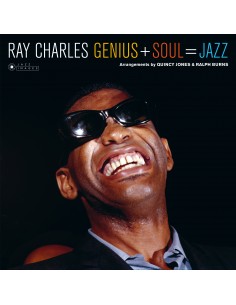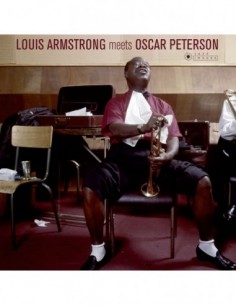Birth of the Cool
Miles DavisTHE JEAN-PIERRE LELOIR COLLECTION
180 pure virgin vinyl LPs in Gatefold packaging
INCLUDES 1 BONUS TRACK
5 STARS ON ALL MUSIC
"Birth of the Cool", released for the first time on a 12-inch LP in 1957, compiled a series of immortal sessions recorded by Miles Davis along with an all-star nonet in 1949-50 and originally issued on 78-rpm singles. It featured innovative instrumentation and arrangements influenced by classical music techniques such as polyphony, and marked a major development in post-bebop jazz.
As the title implies, these recordings are considered seminal in the history of cool jazz. Joining Miles were such important musicians as Gerry Mulligan, Lee Konitz, John Lewis, J.J. Johnson, and Kai Winding. Gil Evans, with whom the trumpeter would later collaborate on various glorious albums, contributed some of the arrangements. “So dubbed because these three sessions are where the sound known as cool jazz essentially formed,” wrote Thomas Erlewine in All Music Guide, “Birth of the Cool remains one of the defining, pivotal moments in jazz. This is where the elasticity of bop was married with skillful, big-band arrangements and a relaxed, subdued mood that made it all seem easy, even at its most intricate.
After all, there’s a reason why this music was called cool; it has a hip, detached elegance, never getting too hot, even as the rhythms skip and jump.” The reviewer gave this album the maximum five-star rating.
PERSONNEL:
MILES DAVIS, trumpet on all tracks, accompanied by:
SIDE A, 1-4:
Kai Winding (tb), Junior Collins (fhr), Bill Barber (tu), Lee Konitz (as),
Gerry Mulligan (bar), Al Haig (p), Joe Shulman (b), Max Roach (d).
New York, January 21, 1949.
SIDE A, 5-6 & SIDE B, 1-2:
J.J. Johnson (tb), Sandy Siegelstein (fhr), Bill Barber (tu), Lee Konitz (as),
Gerry Mulligan (bar), John Lewis (p), Nelson Boyd (b), Kenny Clarke (d).
New York, April 22, 1949.
SIDE B, 3-6:
J.J. Johnson (tb), Gunther Schuller (fhr), Bill Barber (tu), Lee Konitz (as),
Gerry Mulligan (bar), John Lewis (p), Al McKibbon (b), Max Roach (d),
Kenny Hagood (vc on B6 only). New York, March 9, 1950.
Arrangers:
JOHN LEWIS: “Move”, “Budo”, “Rouge”
GERRY MULLIGAN: “Jeru”, “Godchild”, “Venus de Milo”, “Rocker”, “Darn That Dream”
GIL EVANS: “Boplicity”, “Moondreams”
MILES DAVIS: “Deception”
JOHNNY CARISI: “Israel
TRACKS:
SIDE A:
01 JERU
02 MOVE
03 GODCHILD
04 BUDO
05 VENUS DE MILO
06 ROUGE
SIDE B:
01 BOPLICITY
02 ISRAEL
03 DECEPTION
04 ROCKER
05 MOONDREAMS
06 DARN THAT DREAM
- Format
- LP
- Discs
- 1
- Label code
- 37043
 Cookie preferences
Cookie preferences



















































